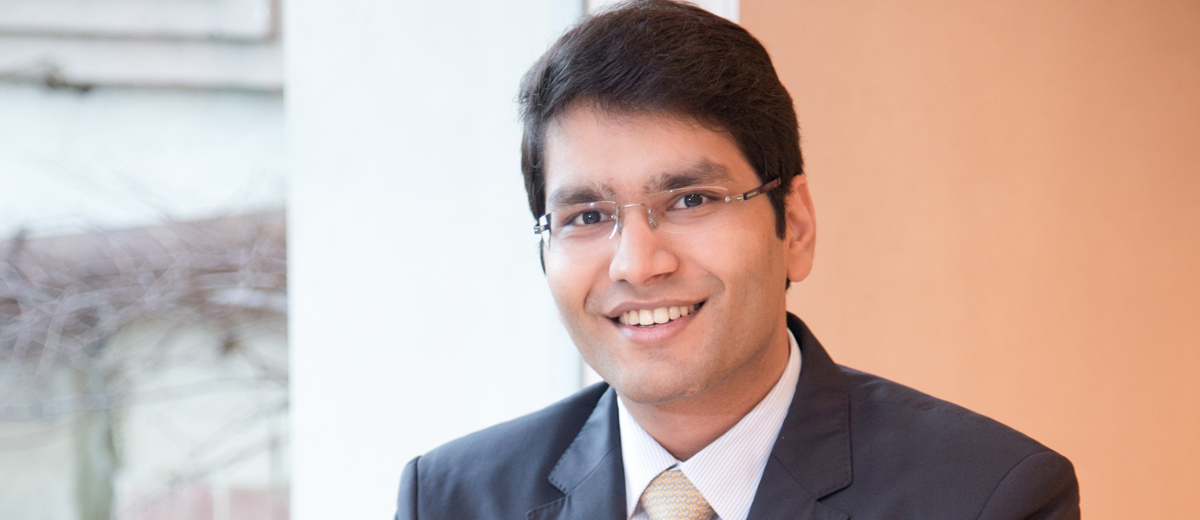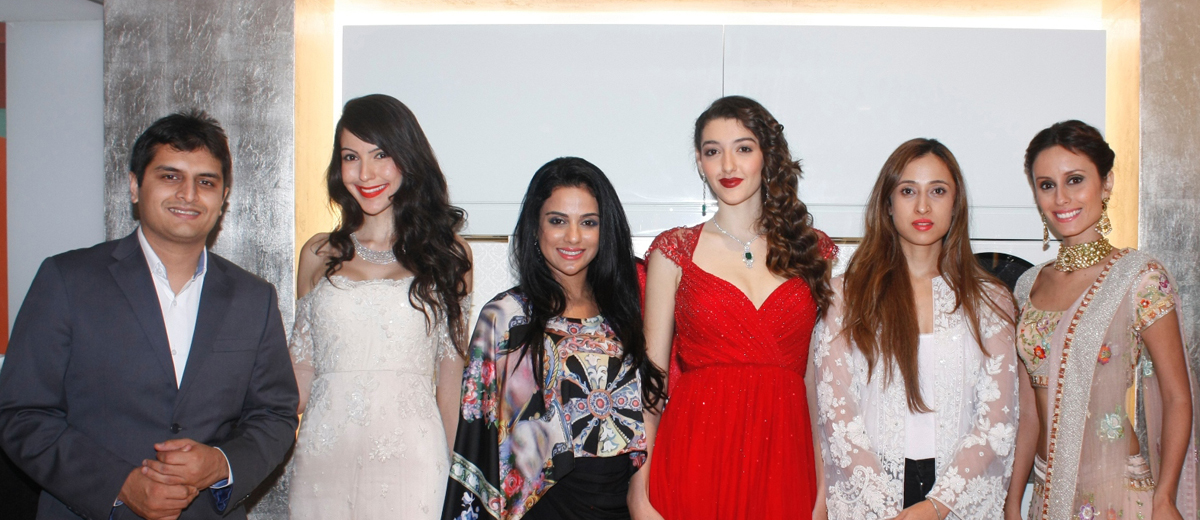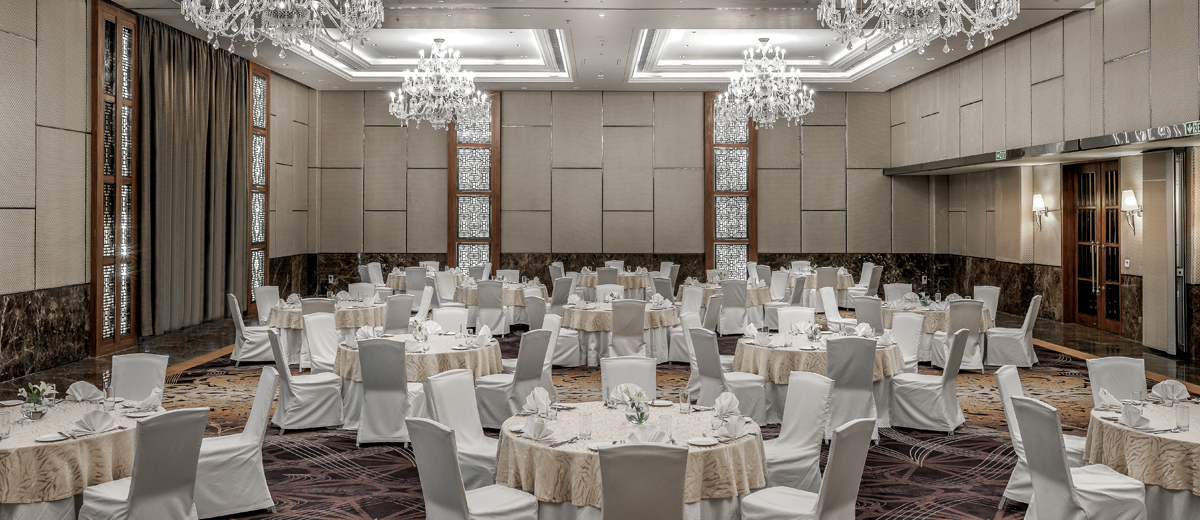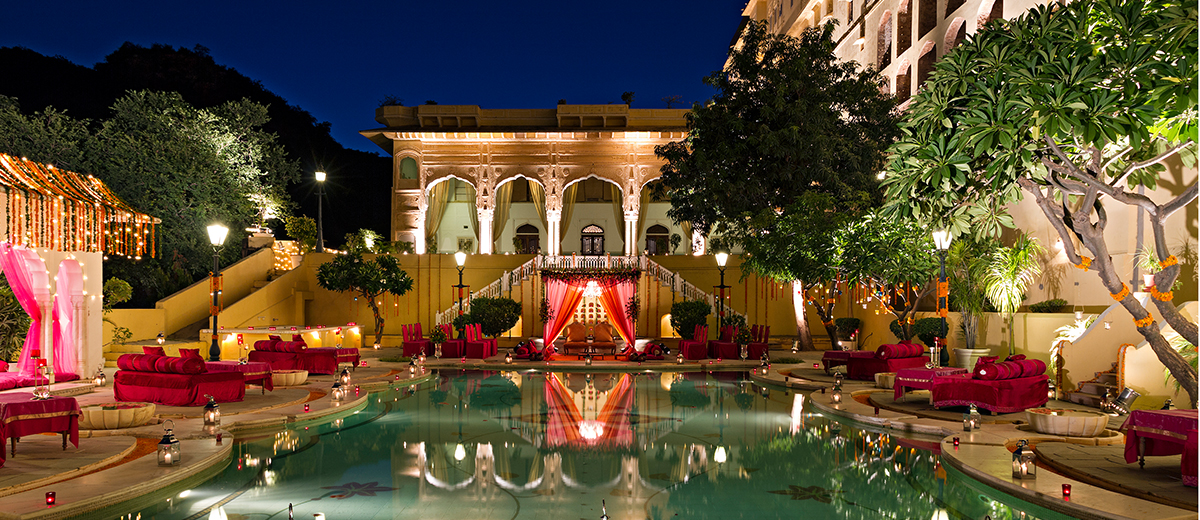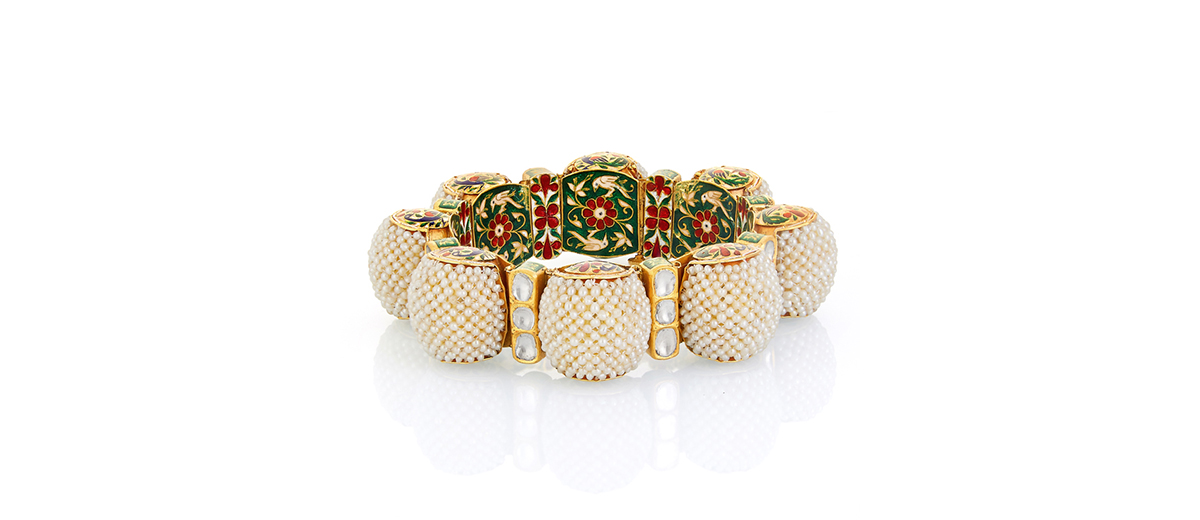
Gem Of A Wedding
Royal, luxurious, surreal and inimitable… these are compliments a Marwari family would like to receive from guests after hosting a wedding. Be it the venue or decor, music or food, attire or vendors, special attention is paid to each aspect of a wedding to make it legendary.
Whether it involves bringing on board a Michelin star chef or selecting the finest fashion designer for the bride’s trousseau, Marwaris go all out when it comes to turning weddings into real-life fairy tales. Why should the jewellery then be anything less than the pièce de résistance? After all, jewellery is what completes the look of a bride.
Tradition has it that each and every jewellery piece worn by the bride has a deep significance and dates back to centuries. From the maang tikka (hair accessory that rests on the forehead) to kamarband (bejewelled waistband) each ornament of the bride is believed to be a symbol of her new role in her new home.
Worn for traditional significance or for their sheer beauty, jewellery assumes utmost importance in a bride’s attire, for it is also a mark of her unique personality. And, with evolving trends, the new-age Marwari bride is spoilt for choice. To help brides-to-be select the best pieces, Jaipur Jewels, Birdhichand Ghanshyamdas Jewellers and AmarKosh Jewels, some of the top names to reckon with in the world of jewellery, dole out top trends and tips.
Jaipur Jewels
 From being an archaeological artefact and a wise investment to a treasure passed down from mother to daughter, jewellery has never lost its appeal and has witnessed many eras of evolution over the ages. The modern-day bride perceives jewellery differently, it being more of a reflection of
From being an archaeological artefact and a wise investment to a treasure passed down from mother to daughter, jewellery has never lost its appeal and has witnessed many eras of evolution over the ages. The modern-day bride perceives jewellery differently, it being more of a reflection of
her personality.
 “Back in 1979, when we launched our first boutique store in Mumbai, the focus was on classic designs and people stayed away from experimenting too much with trendy and contemporary designs,” says Vineet Naheta, Managing Director of Jaipur Jewels Global Limited. Shedding light on what new-age brides look for in jewellery, Co-managing Director, Amit Naheta, says, “Today’s woman is bold and has a mind of her own. She wants to stand out, experiment, and wear a piece that no other woman has. Bespoke and exquisite jewellery is the norm now. Although, we do suggest investing in classic pieces, especially when it comes to putting a client’s trousseau together, we also have a great range of intricate, modern and contemporary jewellery.” Setting foot in the jewellery business in 1863, the Naheta family began as family jewellers to the royalty in Rajasthan, specialising in jadau jewellery.
“Back in 1979, when we launched our first boutique store in Mumbai, the focus was on classic designs and people stayed away from experimenting too much with trendy and contemporary designs,” says Vineet Naheta, Managing Director of Jaipur Jewels Global Limited. Shedding light on what new-age brides look for in jewellery, Co-managing Director, Amit Naheta, says, “Today’s woman is bold and has a mind of her own. She wants to stand out, experiment, and wear a piece that no other woman has. Bespoke and exquisite jewellery is the norm now. Although, we do suggest investing in classic pieces, especially when it comes to putting a client’s trousseau together, we also have a great range of intricate, modern and contemporary jewellery.” Setting foot in the jewellery business in 1863, the Naheta family began as family jewellers to the royalty in Rajasthan, specialising in jadau jewellery.
Eventually, catering to the growing needs and demands of their clients, they ventured into diamonds and infused pirohi-and-jadau jewellery. In 1966, Milapchand Naheta and his son Subhash Naheta formally established the brand as Jaipur Jewels. Thirteen years later, the first boutique store was opened in Mumbai on the Napean Sea Road.
Having a strong lineage and expertise of indigenous karigars from Rajasthan, the brand today has an in-house design studio where designers help customise jewellery as per the client’s requirement. “Our jewellery is certified by the Bureau of Indian Standards (Hallmark), the diamonds by the Gemological Institute of America (GIA) and International Gemological Institute (IGI), the coloured stones by International Colored Gemstone Association and pearls by the Schweizerische Stiftung für Edelsteinforschung from Germany,” Vineet says.
While quality and exquisite craftsmanship are rooted in the brand and are reflected in the jadau and bridal jewellery, their designs also draw inspiration from the bygone Mughal era. “Our jadau pieces are inspired from the glory of Mughal art and culture and we use the finest diamonds to fashion creations that are timeless and make for heirloom pieces that can be passed on from one generation to another,” Amit says. Vineet believes in celebrating the beauty of rare gemstones by creating designs that complement the stones and vice-versa.
The Nahetas tell us that variety and wearability in jewellery are reigning the charts this wedding season. “Oversized naths (nose rings), elaborate headgears, matha-pattis, flamboyant knuckle-rings and multi-finger rings, hath-phools (both in jadau and diamond), which can also be worn at cocktail parties, are in vogue this season.” Keeping up with the trend forecast, Jaipur Jewels has recently launched its new collection called ‘Rise Anew’ that comprises unique and interesting knuckle-rings in rose and white gold, along with some statement timeless pieces.
Birdhichand Ghanshyamdas Jewellers
Located in the Pink City, Birdhichand Ghanshyamdas Jewellers is known for bringing in a revolution in jewellery. Established in 1940, Birdhichand is one of the oldest names that specialises in kundan minakari, and over the years the brand has carved a niche for itself in the luxury jewellery segment. Talking about the changing face of the 21st-century bride, Yash Agarwal, Creative Director, Birdhichand Ghanshyamdas, draws a parallel from the time they started and the current trends: “Back then, heavy sets were in trend, and a bride would be clad with jewellery from head to toe. Now, the trend is minimalist and brides are more interested in wearing selective jewellery pieces that complement their look rather than overpower it.” Agarwal graduated from Gemological Institute of America, Carlsbad, California, and has formal training in jewellery designing and manufacturing, colour stone identification and diamond grading.
Being a household name in jewellery and knowing the art of innovating well, Birdhichand is a seasoned hand that caters to all kinds of bridal jewellery. “Being Marwaris, we knew what the brides wanted 40 years ago and we know what appeals to them now. Hence, it gives us an edge in designing jewellery that they desire and that will suit them,” says Agarwal. According to Agarwal hath-phools, ornate rings, necklaces and head ornaments are some major bridal jewellery trends this year.
Each collection at Birdhichand is unique and based on novel themes. Their latest collection called ‘Adaa’ consists of elegant and timeless jewellery pieces that celebrate the beauty and iconic sense of style of the royal women of India, viz., Maharani Gayatri Devi, Sita Devi, Umrao Jaan, Jodha Bai, Princess Niloufer and Razia Sultan. Other innovatively-themed collections include ‘Hunar’, which consists of Mughal-enamelled kundan jewellery studded with table-cut diamonds; ‘Noor’, a collection of contemporary jewellery comprising solitaires and diamond studded sets; ‘Adrishya’, which boasts gold jewellery ornamented with colourful gemstones and pieces inspired by nature in floral motifs in shades of pink, blue, green and red; ‘Aranya’, a range of exquisite jewellery inspired by the beauty of birds and animals; ‘Amer’, which features jewellery designs that remind us of forts and palaces of Jaipur; and ‘Aks’, which reflects the past and its significance by capturing cultures of different eras.
AmarKosh Jewels
 Hailing from the small town of Bareilly and moving to Mumbai post her marriage, Archana Parasrampuria forayed into the world of jewellery while merely pursuing a hobby. Fifteen years later, Parasrampuria turned her penchant into a blossoming business of designing and manufacturing jewellery under the name of AmarKosh Jewels. AmarKosh, which means eternal wealth in Sanskrit, specialises in bespoke jewellery that keeps up with the changing needs of clients. The brand creates pieces that are a mix of Indian and western styles and can perk up any attire. “Our jewellery pieces are multi-functional and let you add and remove from the ready product and design so that they can be worn for different occasions,” says Parasrampuria.
Hailing from the small town of Bareilly and moving to Mumbai post her marriage, Archana Parasrampuria forayed into the world of jewellery while merely pursuing a hobby. Fifteen years later, Parasrampuria turned her penchant into a blossoming business of designing and manufacturing jewellery under the name of AmarKosh Jewels. AmarKosh, which means eternal wealth in Sanskrit, specialises in bespoke jewellery that keeps up with the changing needs of clients. The brand creates pieces that are a mix of Indian and western styles and can perk up any attire. “Our jewellery pieces are multi-functional and let you add and remove from the ready product and design so that they can be worn for different occasions,” says Parasrampuria.
Parasrampuria focuses on creating fewer pieces without any compromise on quality. Her classy designs boast superior craftsmanship, which can complement the new-age bride who wants to don a cosmopolitan look for her wedding. “I always advice my clients, who are buying bridal wear, to go for a polki necklace and bracelet in a jadau setting with a pair of long, beautiful dangling earrings, which can be paired with coloured stones as well,” she says. Oversized rings that cover most of the hands up to the wrist are also in demand, she adds.
Marwaris may be evolving with time, but the community is still rooted in traditions and so is their jewellery. For some brides, wearing their mother’s or grandmother’s jewellery is a joy so big that it dwarfs any other feeling. But with time, the jewellery from the grandmother’s closet either depreciates in sheen or fails to cope up with the latest trends. Parasrampuria believes in keeping the client satisfied and hence revamps
old jewellery.
“Brides ask us to modernise what their mothers have in their vaults. It’s undoubtedly a task to revolutionise an existing piece to make it look trendy without killing its antique look, but we spend time designing and redesigning it for the satisfaction of our clients. The ultimate gratification is to see both the mother and the bride happy with the piece we create,” she says with a smile.

